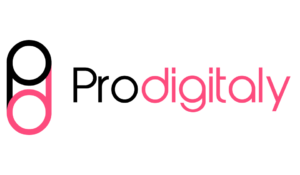
Introduction:
Maintaining an impactful presence on social media platforms is crucial for businesses and individuals in today’s digital landscape. With the rise of artificial intelligence (AI) development, the role of AI-driven assistants in social media management has become increasingly significant. Among these, ChatGPT emerges as a versatile tool capable of revolutionizing how we approach social media management. In this article, we’ll delve into the multifaceted capabilities of ChatGPT as a social media assistant, exploring how it can streamline tasks such as scheduling posts, responding to audience interactions, personalizing content creation, analyzing performance, and integrating seamlessly with existing tools and platforms.
I. Understanding ChatGPT as a Social Media Management Assistant:
ChatGPT, powered by OpenAI, is an advanced AI language model that generates human-like text responses based on input prompts. As a social media assistant, ChatGPT leverages its natural language processing capabilities to understand and generate contextually relevant content for various social media platforms.
II. Scheduling posts with ChatGPT:
One of the primary tasks in social media management is scheduling posts for optimal engagement. ChatGPT integrates with scheduling tools to automate this process, allowing users to set up a posting schedule and generate content accordingly. ChatGPT helps analyze post schedules for maximum reach and impact by analyzing optimized behaviour and platform algorithms.
III. Responding to Audience Interactions:
Timely and personalized responses to audience queries and comments are essential for building a solid online presence. ChatGPT assists in this aspect by generating contextually appropriate responses that reflect the brand’s voice. While maintaining authenticity is paramount, ChatGPT ensures that responses are generated promptly, enhancing customer satisfaction and engagement.
IV. Personalizing Content Creation:
Each social media platform has unique audience demographics and content preferences. ChatGPT generates ideas and assists in content creation to tailor content for different platforms. By understanding the nuances of each platform and adhering to brand guidelines, ChatGPT helps maintain consistency in messaging while catering to diverse audience preferences.
V. Analyzing Performance and Refining Strategies:
Data analysis is essential for optimizing social media strategies and refining content based on audience insights. ChatGPT facilitates this process by providing actionable insights derived from social media metrics and trends. ChatGPT enables users to iterate on their strategies and achieve better results over time by identifying patterns in audience engagement and content performance.
VI. Integrating ChatGPT with Existing Tools and Platforms:
ChatGPT integrates with popular social media management tools and CRM systems, enhancing workflow efficiency and collaboration. Users can customize ChatGPT’s functionalities through API integration to meet their requirements, ensuring a tailored solution that aligns with their existing infrastructure.
Conclusion:
In conclusion, ChatGPT emerges as a powerful ally in social media management, offering various functionalities that streamline tasks and enhance efficiency. Users can automate post-scheduling, audience interaction, content creation, and performance analysis processes by leveraging its natural language processing capabilities. Integrating ChatGPT into existing workflows saves time and resources and enables businesses and individuals to stay ahead in the competitive landscape of social media. As AI-driven technologies evolve, ChatGPT stands out as a versatile tool that empowers users to effectively elevate their social media presence and achieve their goals.
FAQs:
1. Can ChatGPT completely replace human social media managers?
Ans: While ChatGPT can automate various tasks in social media management, it can only partially replace human social media managers. Human oversight is essential for maintaining authenticity, handling complex scenarios, and ensuring brand values and guidelines compliance.
2. How does ChatGPT handle sensitive or controversial topics on social media?
Ans: ChatGPT is trained on a diverse dataset, but it is likely to generate inappropriate responses, particularly in sensitive or controversial topics. Users should review and refine outputs to align with brand values and suit the intended audience.
3. Is there a risk of ChatGPT generating inappropriate responses?
Ans: As with any AI-driven tool, ChatGPT may generate inappropriate responses. However, proper training, monitoring, and filtering mechanisms can help mitigate this risk effectively. Users should implement safeguards and review the generated content before publishing it.
4. Can ChatGPT understand and utilize emojis and other visual elements in social media posts?
Ans: ChatGPT can interpret and generate text-based representations of emojis and visual elements commonly used in social media posts. However, it may not always produce the desired results, and users may need to provide additional context or refine the output as necessary.
5. What security measures are in place to protect sensitive data when using ChatGPT for social media management?
Ans: OpenAI, the organization behind ChatGPT, implements robust security measures to protect user data and privacy. These measures include encryption of data transmission, access controls, and adherence to industry best practices for data security. Users should also take precautions to safeguard their data and follow recommended security protocols when using AI-driven tools.



